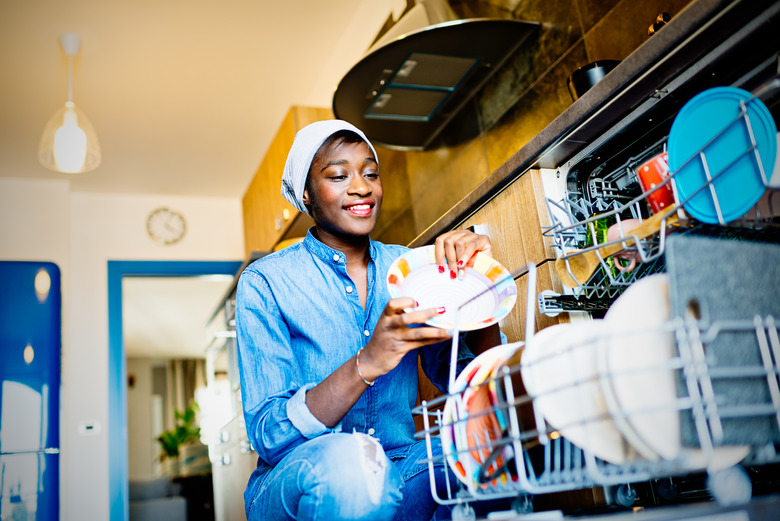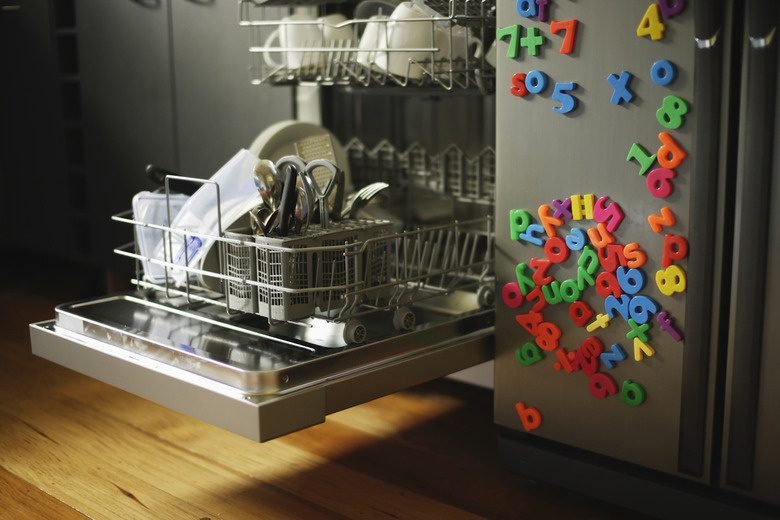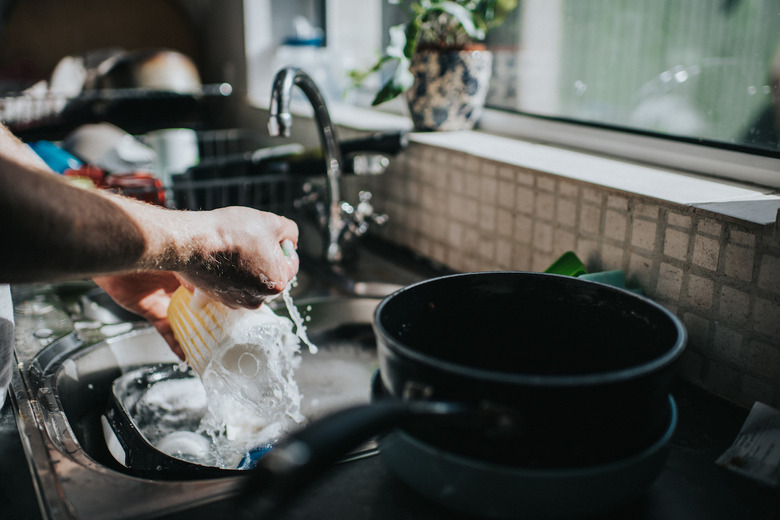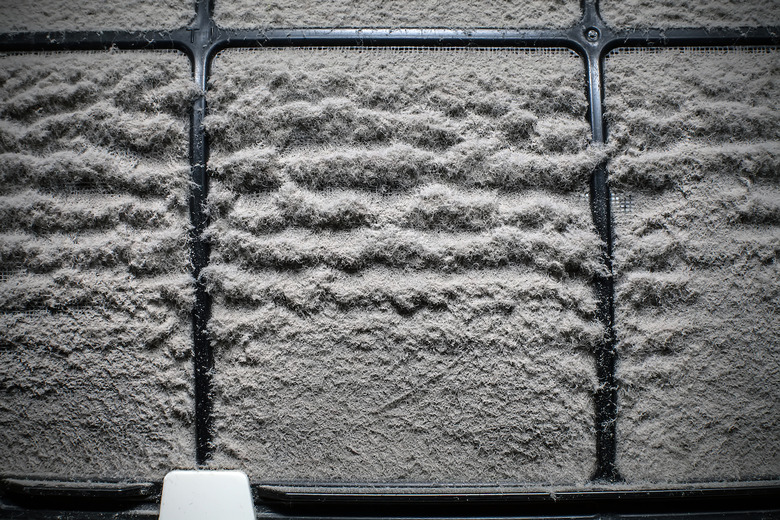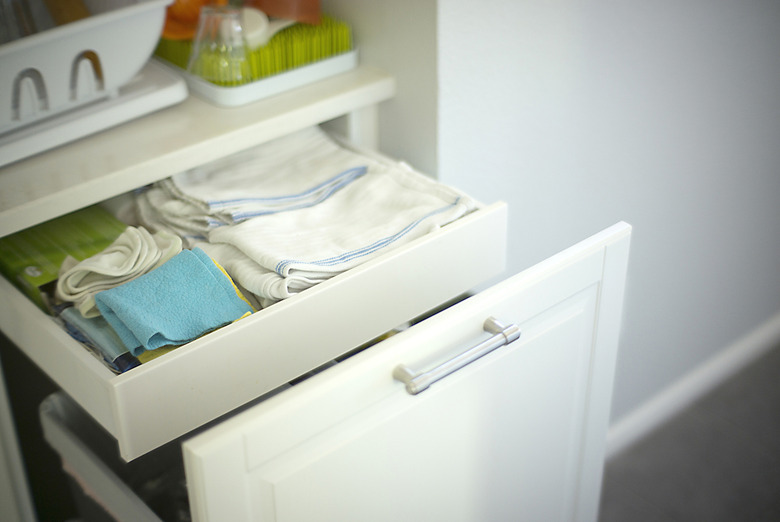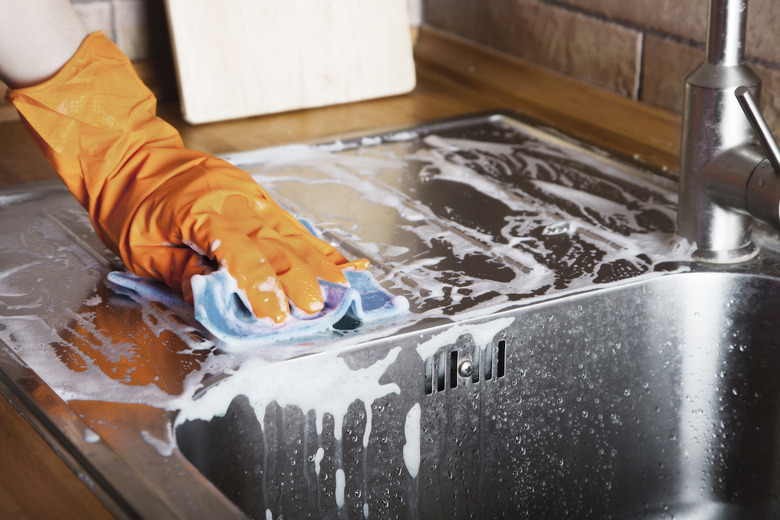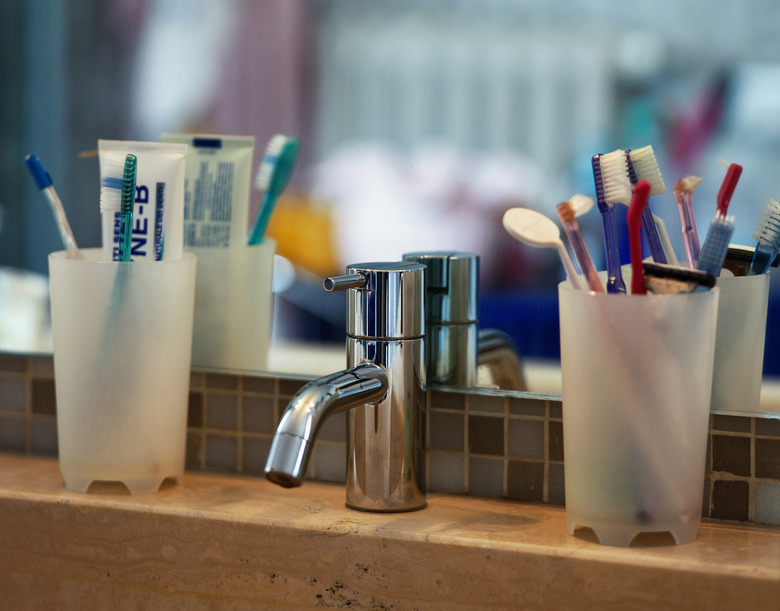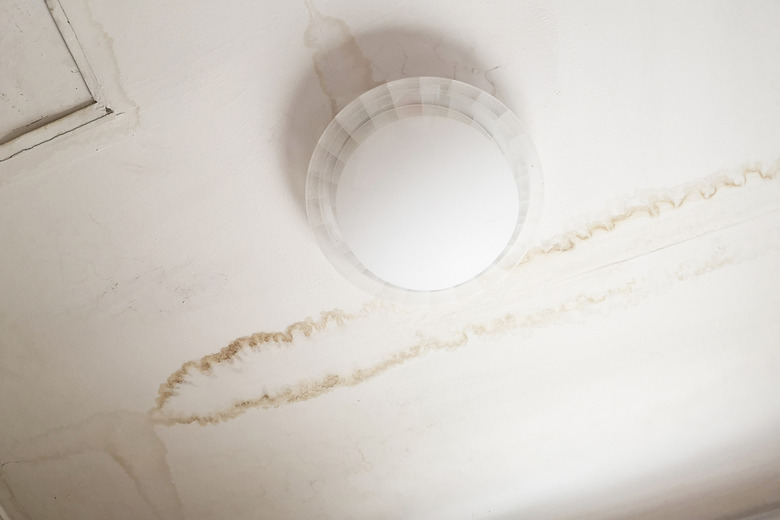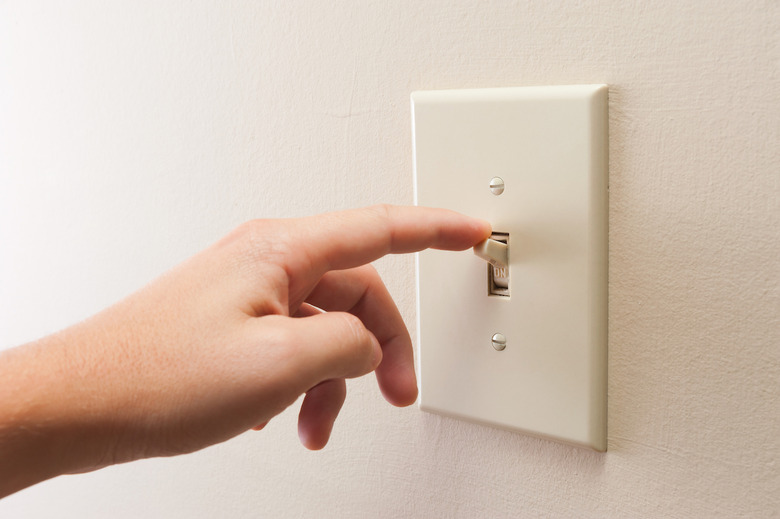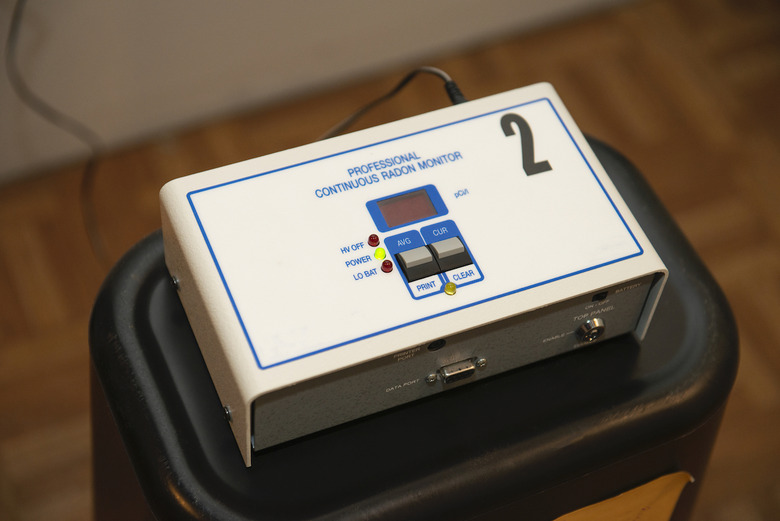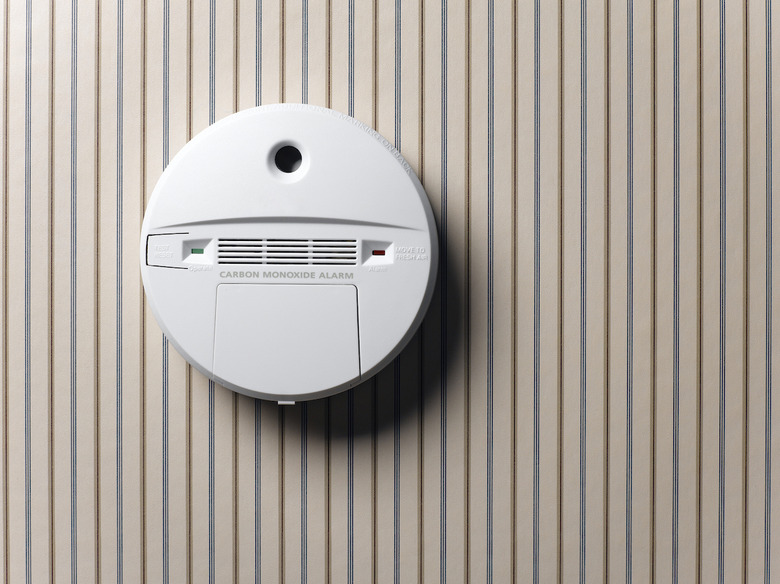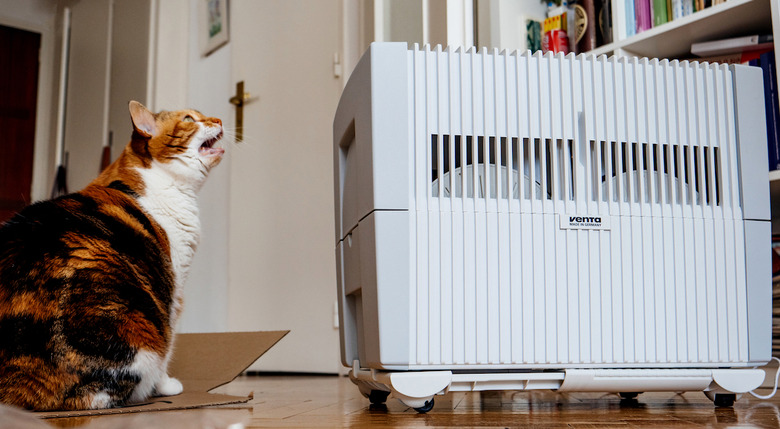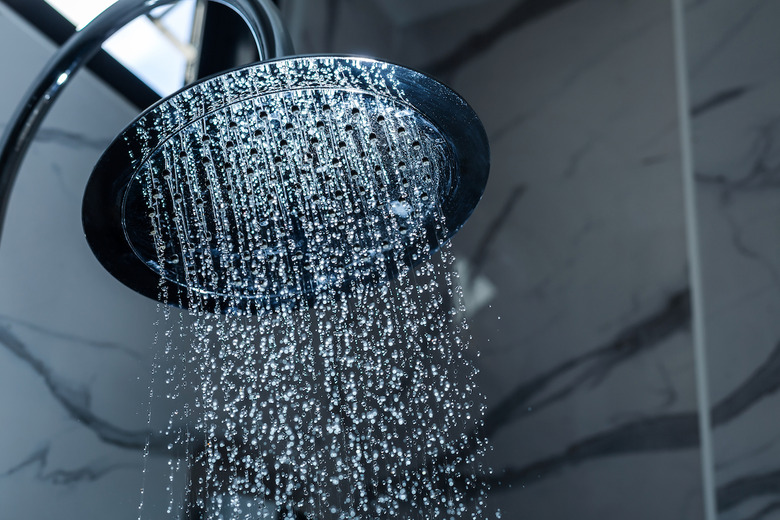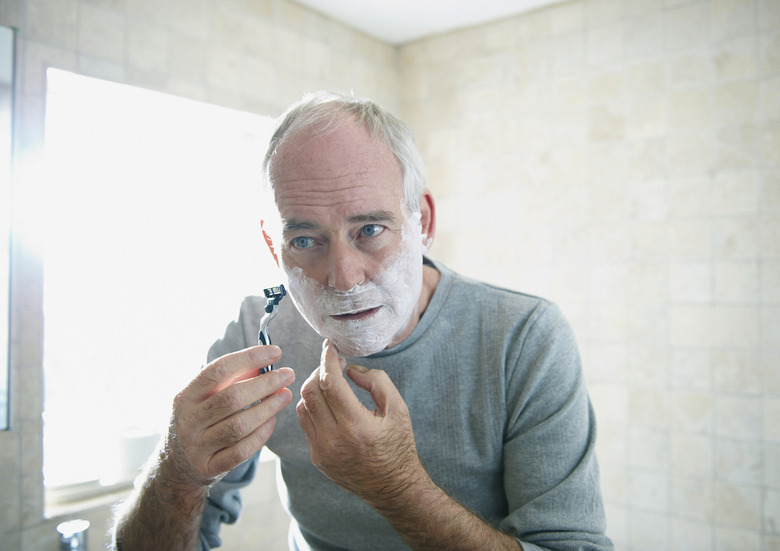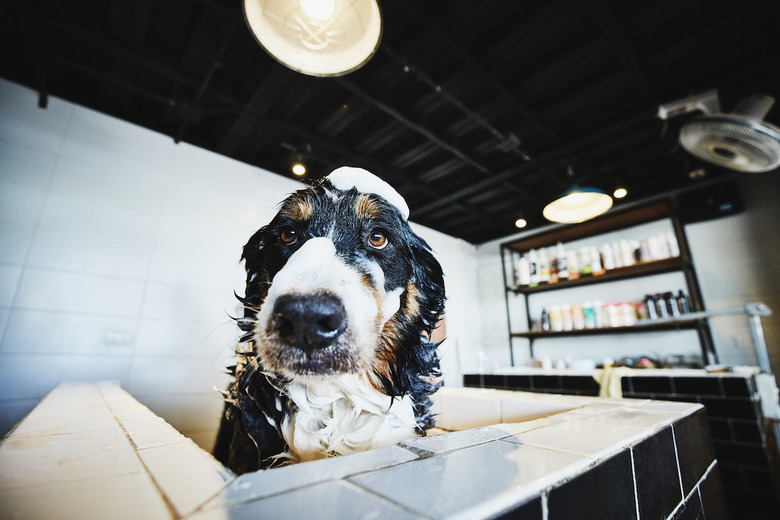Common Home Mistakes That Could Be Making You Sick
Home is where the heart is. And if that heart is in a physical house, home is where bacteria is too. Harmful pathogens threaten your physical health and that of any loved ones, friends or family you share the space with. Though easy to make and tough to notice, the following household mistakes are in need of a fix. Own up to your untidy shortcomings and adopt measures to correct these 20 missteps that may be making you sick.
Not cleaning your dishwasher ...
While your dishes may exit the dishwasher good-as-new, the same cannot be said for the machine itself. In a 2011 study of 189 dishwashers, 62% of machines tested positive for fungi and 56% for black yeasts known to cause disease. The dishwasher's high temperatures, moisture and pH levels contributed to an ideal habitat for pathogenic species. While the average person has a low risk of illness, those with immune deficiencies are at increased risk. To clean a dishwasher, Consumer Reports recommends you begin with the exterior, clear out any manual filter, place a bowl of white vinegar on the bottom rack and run the dishwasher. However, do not pre-rinse dishes before washes.
… or your sponge
Your turn hand dish-washers. While a 2014 study found allergic diseases in children less common among families who hand wash than machine wash, your trusty sponge is dirtier than the dishes it cleans. Sponges are "microbiological hot spots," according to researchers of one 2017 study published in Scientific Reports, who wrote, "they represent the biggest reservoirs of active bacteria in the whole house." The USDA recommends microwaving your sponge or dishwashing on a dry cycle to inactivate bacteria, yeasts and mold. Keep sponges away from raw meat and clean them every few days. You should also be replacing your sponge often. It is one of many household items you need to replace more often than you probably do.
Not sanitizing after cleaning
Do not underestimate the power of sanitation. Resist the urge to rest after eating a hearty meal, tossing the dishes in the wash and wiping down the countertops. To best eliminate the risk of foodborne illness, according to the USDA, wash your hands and clean all kitchen surfaces using warm, soapy water. Wipe the surfaces dry. Then, using a commercial sanitizer, wipe or homemade solution of 1 tablespoon liquid chlorine bleach and a gallon of water, pour, spray or wipe sanitizer on all kitchen surfaces. Why should you do this? The soapy water you are most likely to use may rid your countertops of dirt and grime, but it will not kill bacteria.
Not changing air filters
Classified as one of the top five environmental health risks by the Environmental Protection Agency, indoor air pollution can be quelled by air filtration. As air filters and cleaners reduce airborne allergens, they provide relief for sufferers of these surprising allergic reaction symptoms. Replace filters regularly to keep air clean. The American College of Allergy, Asthma and Immunology suggests you pass on ionic electrostatic room cleaners. Instead, look for a HEPA (high-efficiency particulate air) filter with a clean air delivery rate that matches the size of whichever room you plan to use it in.
Setting your refrigerator to the wrong temperature
At room temperature, according to the FDA, the number of bacteria that cause foodborne illness can double every 20 minutes. To keep food fresh, stick to a 40-degree Fahrenheit or lower fridge and zero-degree Fahrenheit freezer. Since your refrigerator controls likely do not display real-time temps, invest in freestanding appliance thermometers. Other fridge considerations to note; never overpack a fridge because it will affect the temperature, and always put away leftovers within two hours. Your fridge setting is just one of the many ways you're storing your groceries all wrong.
Using one rag to clean everything
More than half of Americans choose dishcloths over sponges, paper towels and other all-purpose picker-uppers. Although a way to be more sustainable, using one rag allows germs and bacteria a way of traveling across the entire home. From the kitchen to the bathroom to the bedroom, germs on one overworked rag can wreak havoc. Instead, use multiple rags, each delegated to protect and defend one part of the home. Be sure to frequently wash your cloths on the hot water cycle and dry on a high setting to kill germs.
Not washing your sink
The kitchen sink ranks second in germiest and dirtiest spots in the home, just behind the kitchen sponge or dishcloth. The one-two punch clean and sanitize method is for everything and the kitchen sink. Do an initial pass with warm, soapy water and follow up with a DIY 1 tablespoon bleach, 1 gallon water solution. Once a month, add 1 tablespoon bleach to just 1 quart of water and pour that down the drain to sanitize kitchen drains and disposals.
Storing your toothbrush wrong
Stuffing a still wet toothbrush in a dark hidden cabinet allows bacteria a chance to grow. Allow your toothbrush to dry in a holder. But remember to wash the toothbrush holder regularly. In the germy power ranking, toothbrush holders rank high, just behind the kitchen sink. If dishwasher safe, dishwash. If not, clean and sanitize your toothbrush holder with a wipe twice a week. Replace your toothbrush every four months, and keep it far from the toilet. "Toilet plume" aerosols produced from a toilet flush put your toothbrush at risk of encountering fecal bacteria.
Not dealing with water damage
Whether residual damage from a devastating natural disaster or a seemingly inconsequential leak, water damage opens the door to unwanted mold growth. A small patch of water can have more going on beneath the surface. People with immune suppression, asthma, allergies or other breathing conditions are more sensitive to mold and susceptible to infection. To clean up mold, the Centers for Disease Control and Prevention recommends you wear protective gear, air out and circulate all affected rooms and scrub surfaces with water and a detergent. Dry all surfaces immediately after.
Incorrectly defrosting your food
Listen to the USDA and do not leave a chicken breast to defrost on your counter for hours. Instead, thaw foods in the refrigerator, microwave or cold water. Small foods can thaw in the fridge overnight, while larger foods may require multiple days. Otherwise, place the food in a leak-proof bag and dunk in a cold-water bath. Replace the water every half hour until the food is adequately thawed. If defrosting in the microwave, cook immediately after thawing as parts of the food may have already warmed in the microwave.
Not cleaning doorknobs or light switches
Two of many household spots you've never thought to clean, doorknobs and light switches, are bacterial hubs. Experts at the Cleaning Institute recommend people disinfect their doorknobs and light switches twice a week and more thoroughly once every two weeks. To disinfect, first remove any loose dirt or grime that may have built up, then spray a disinfectant over the surface. Make sure the area remains wet for several minutes before wiping the excess away with a clean cloth.
Not cleaning your mobile phone or computer keyboard
As technology advances, so do ways to contract bacterial infections. In 2016, CBT Nuggets swabbed common office items, five of each category, and sent them to a lab. The CFU, average colony-forming units per square inch, of a keyboard was 20,500 times that of a bathroom toilet and twice that of a cell phone. The CDC recommends using a cleanable cover or skin for keyboards and laptops. This allows for the icky surfaces to be cleaned without posing a threat to the product. If without a skin, use a can of compressed air to blow away any residual dust and wipe down with a disinfectant wipe.
Not checking for radon
Radon, an odorless and tasteless radioactive gas, is the second leading cause of lung cancer. According to the CDC, radon forms when radioactive elements break down in rocks, soil and groundwater. The toxic gas travels into your home through cracks in your home. All houses have some radon gas, so test yours to see where it stands. Radon tests come in two types, one done over two days and another over 90 days. The 90-day tests offer more accurate results. To better protect your home, secure any cracks in walls or floors and increase airflow with open windows, fans and vents. And if building a new home, consider radon-resistant construction techniques.
Not using carbon monoxide detectors
Risk of carbon monoxide (CO) poisoning increases during the winter when the heat runs all day. CO travels from heat systems like furnaces and portable generators. Dizziness, weakness, nausea, chest pain and headaches are all symptoms of CO poisoning. Luckily, you have the power to prevent CO poisoning entirely. Use a CO detector and switch out the batteries every six months. Have qualified technicians check heating systems yearly and never run a car motor in a garage or other enclosed space.
Not cleaning out a humidifier
A household necessity when fighting the flu or a cold, cold-mist humidifiers increase air moisture, ease nose and chest congestion and soothe dry skin. However, a dirty humidifier can do more harm than good. Bacteria and mold thrive in the humidifier's moisture-rich environment. Allergy or asthma sufferers employing a humidifier to help breathe are at increased risk but even otherwise healthy people are at risk of contracting flu-like symptoms from the contaminated mist.
Not testing for lead and asbestos
Exposure to lead, a highly toxic metal, has been linked to seizures, learning disabilities, behavioral issues and even death. Homes built before 1978 tend to contain lead paint. While homes built before 1986 are more likely to have lead-based pipes and fixtures. Have your home undergo a risk assessment and paint inspection. In addition, check your annual Consumer Confidence Report, provided by your community water system, for details on your water quality. While at it, enlist a professional to test your home for asbestos, another hazardous substance known to cause various cancers and diseases.
Not cleaning your shower head
Moisture strikes again. Bacteria with the genus mycobacterium thrive in showerheads. Inhalation of these pesky bacteriums has been linked to the transmission of difficult-to-treat lung infections. A 2018 study of 656 household showers discovered that the abundance of mycobacterium on plastic showerheads was two times lower than that of metal or mixed material showerheads.
Not cleaning the gasket in your blender
Salmonella, E. coli, yeast and mold are all capable of life at the bottom of your blender. Next time you move to stir up ginger, spinach, bananas or protein powder and other weight-loss foods in your blender, disassemble it first. Detach the gasket and pull apart the base, clean all thoroughly. Also be sure to clean can openers, knife blocks and rubber spatulas.
Defend against MRSA infection
MRSA most often causes skin infections, other infections and pneumonia. It can survive hours, days and weeks in common household items like razors, furniture, athletic gear, towels and other surfaces that come in contact with people's bare skin. Routinely disinfect these hot spots using products labeled effective in removing MRSA, staphylococcus aureus or staph.
Not properly bathing your pet
Animals, like people, carry germs, bacteria and diseases. While some diseases common in animals cannot be transmitted to humans, other harmful bacterias, viruses and parasites can travel through their dander, waste or saliva. Always wash your hands after touching your pet or its cage. Lifestyle, coat type and special health considerations should all be considered when deciding how routinely you bathe your pet. Just as you strive to keep a clean home for the better health of yourself and loved ones, keep your pet healthy too by looking out for common foods that might harm your pet.
More From The Daily Meal
Tips for Avoiding Food Poisoning
19 Foods to Help Lower Your Blood Pressure
How to Boost Serotonin, Dopamine and Endorphins, the Happiness Hormones
